Abstract
C3PA levels were measured sequentially in four patients prior to and following general anaesthesia and surgery, and in twenty patients with active inflammatory diseases. Elevated levels (+70% and +60%, respectively) were observed in both patient groups, indicating that C3PA is a potent acute phase reactant. Peak levels were seen 4 days following surgery, 1–2 days after the peak of the C-reactive protein response. C3PA, along with C1s, were the complement proteins which of those tested showed the greatest elevation during the acute phase response. We conclude that the serum C3PA level should be interpreted with consideration of its role as an acute phase reactant.
Full text
PDF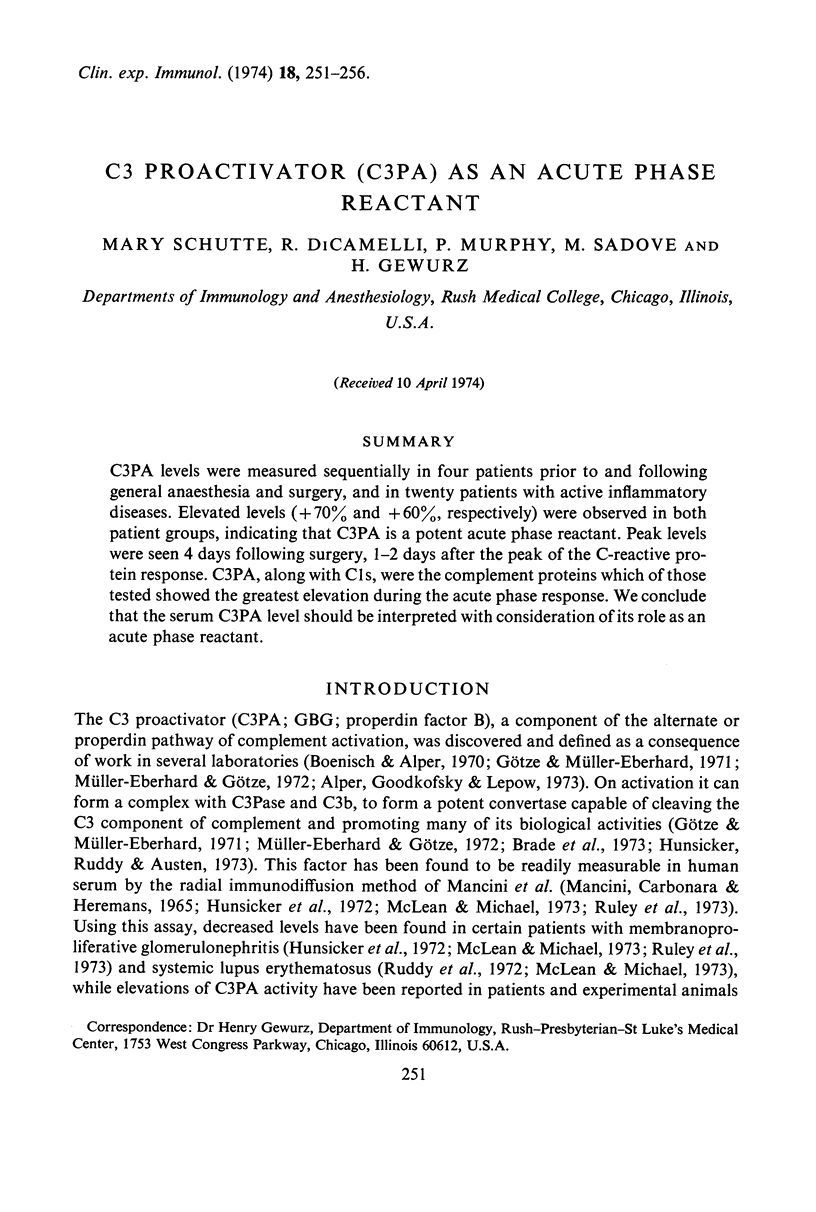
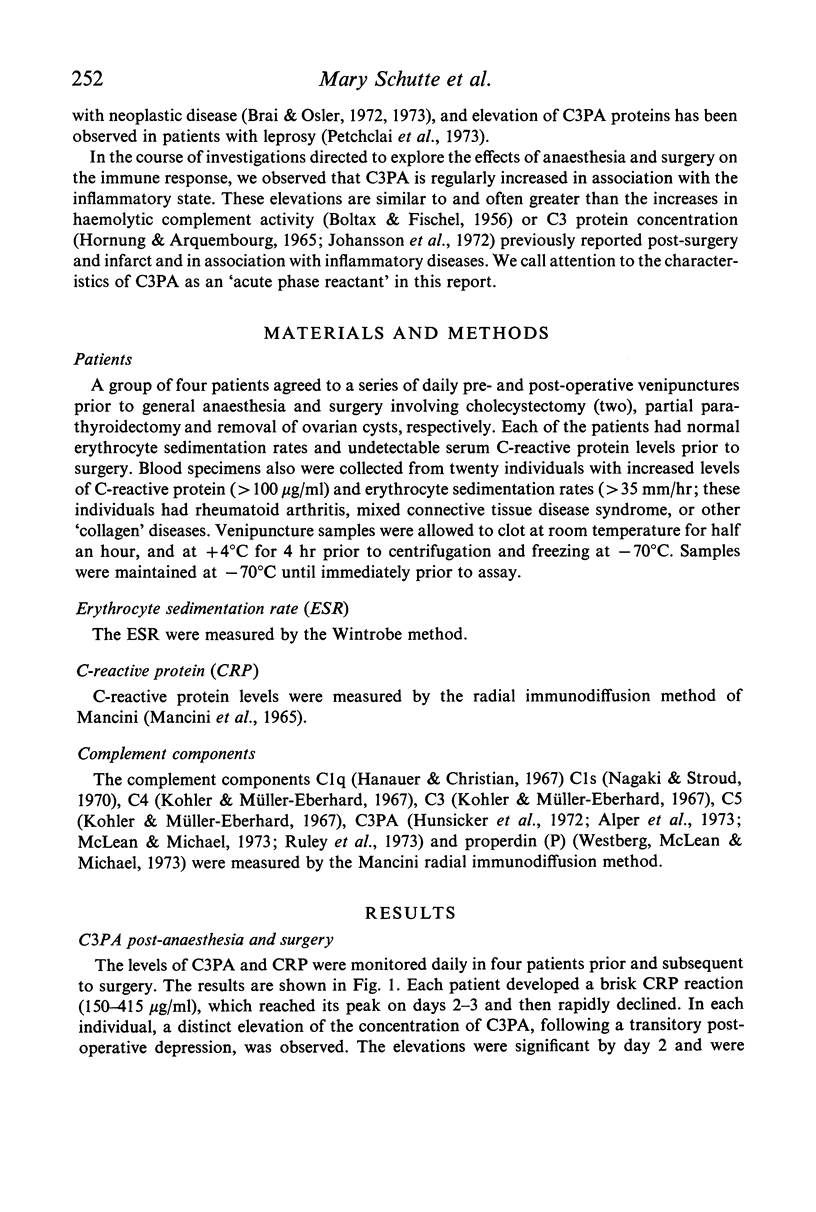
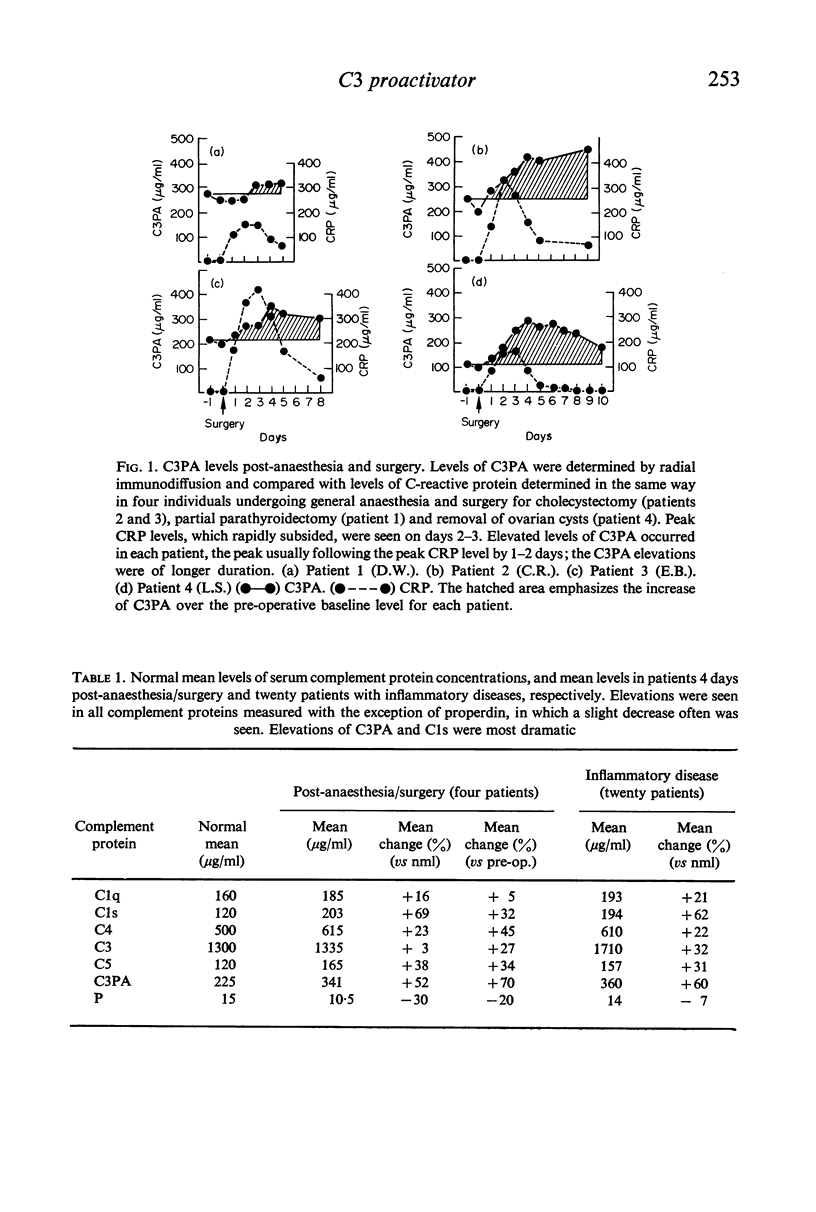
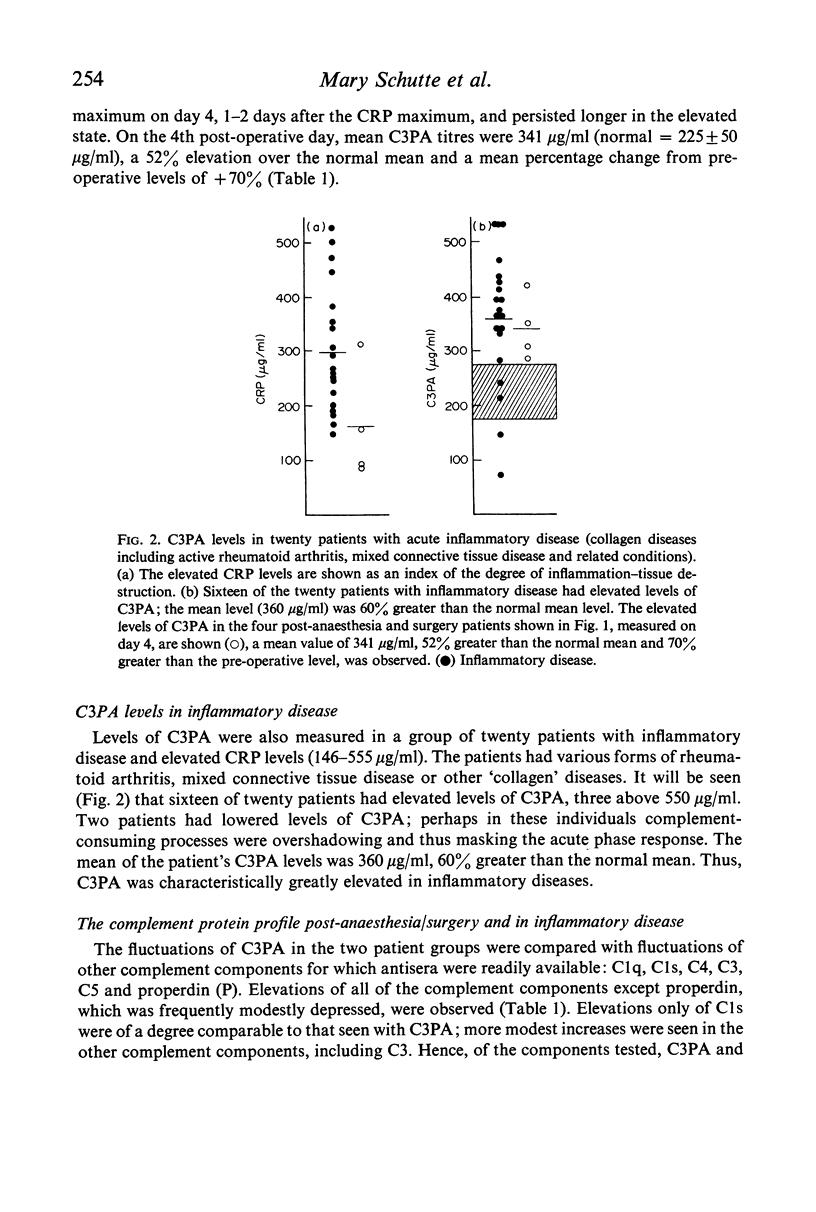
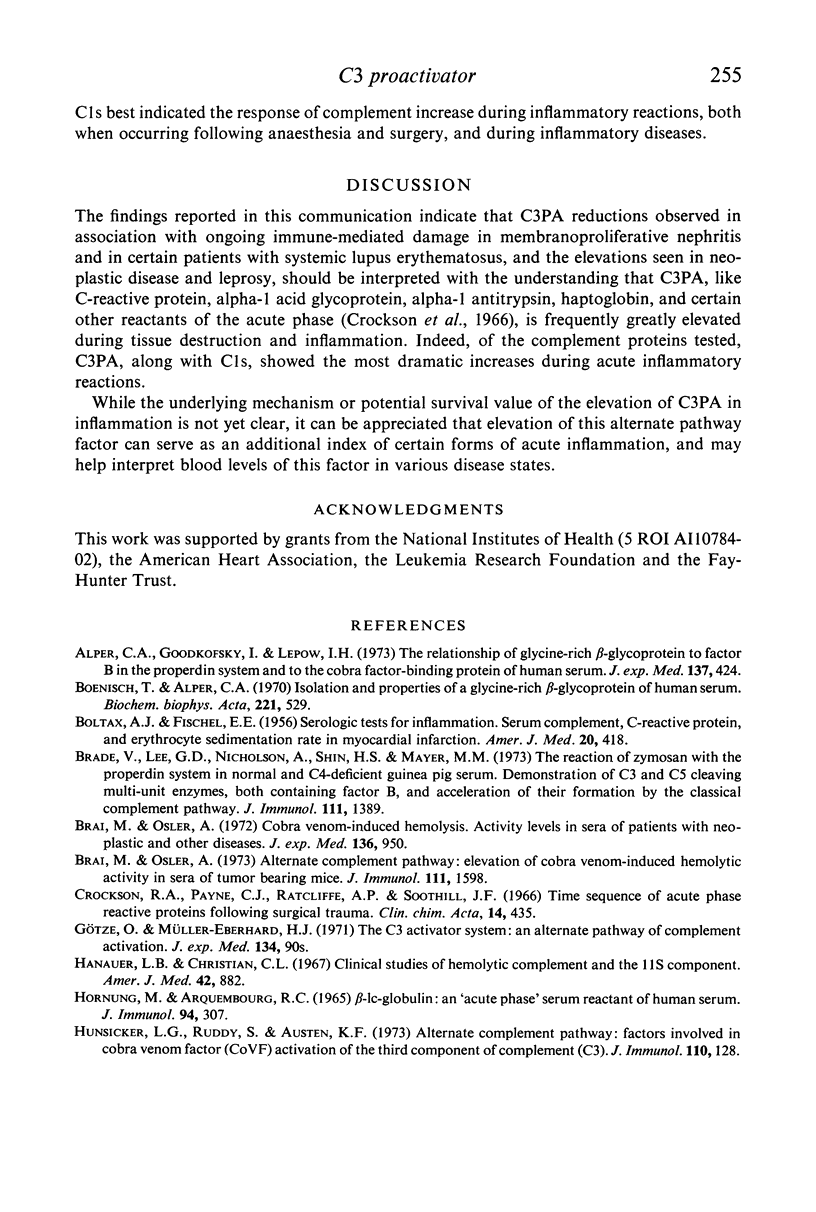
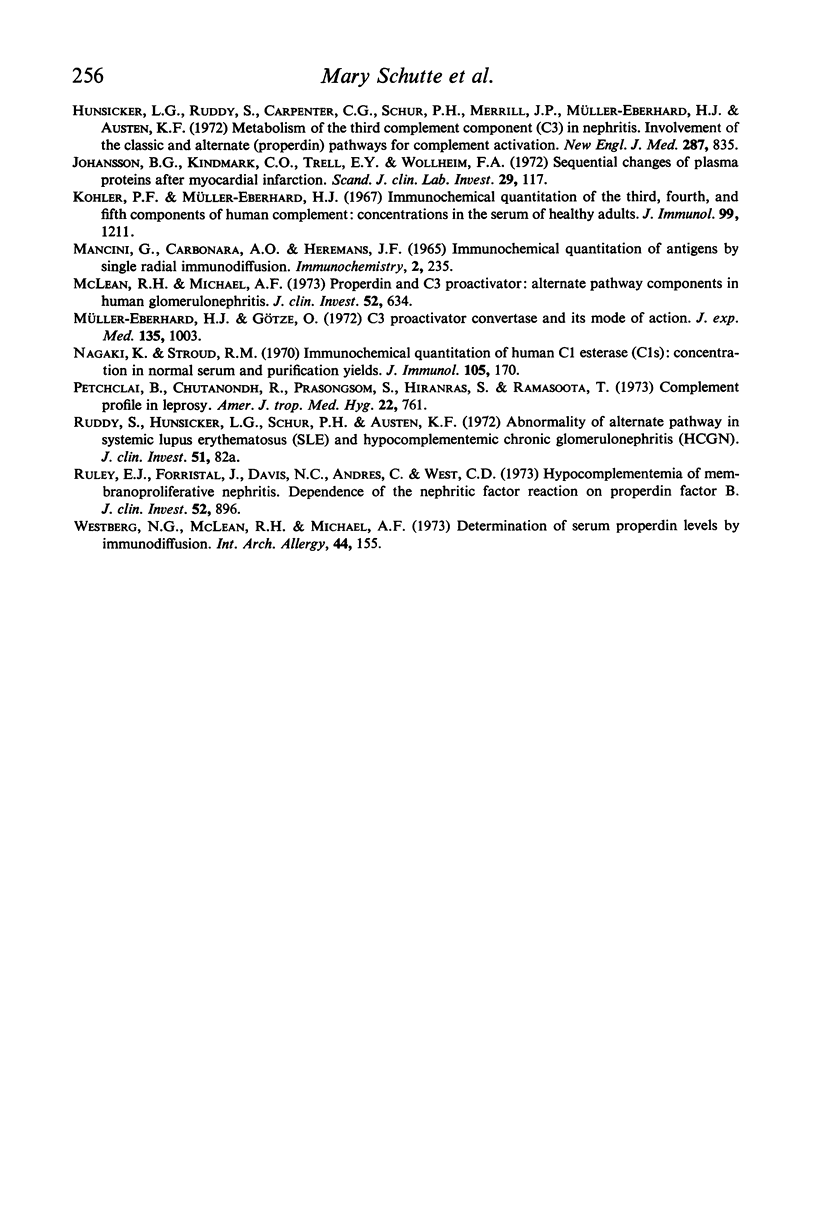
Selected References
These references are in PubMed. This may not be the complete list of references from this article.
- Alper C. A., Goodkofsky I., Lepow I. H. The relationship of glycine-rich -glycoprotein to factor B in the properdin system and to the cobra factor-binding protein of huan serum. J Exp Med. 1973 Feb 1;137(2):424–437. doi: 10.1084/jem.137.2.424. [DOI] [PMC free article] [PubMed] [Google Scholar]
- BOLTAX A. J., FISCHEL E. E. Serologic tests for inflammation; serum complement, c-reactive protein and erythrocyte sedimentation rate in myocardial infarction. Am J Med. 1956 Mar;20(3):418–427. doi: 10.1016/0002-9343(56)90127-9. [DOI] [PubMed] [Google Scholar]
- Boenisch T., Alper C. A. Isolation and properties of a glycine-rich beta-glycoprotein of human serum. Biochim Biophys Acta. 1970 Dec 22;221(3):529–535. doi: 10.1016/0005-2795(70)90224-2. [DOI] [PubMed] [Google Scholar]
- Brade V., Lee G. D., Nicholson A., Shin H. S., Mayer M. M. The reaction of zymosan with the properdin system in normal and C4-deficienct guinea pig serum. Demonstration of C3- and C5-cleaving multi-unit enzymes, both containing factor B, and acceleration of their formation by the classical complement pathway. J Immunol. 1973 Nov;111(5):1389–1400. [PubMed] [Google Scholar]
- Brai M., Osler A. G. Alternate complement pathway: elevation of cobra venom-induced hemolytic activity in sera of tumor-bearing mice. J Immunol. 1973 Nov;111(5):1598–1599. [PubMed] [Google Scholar]
- Brai M., Osler A. G. Cobra venom-induced hemolysis. Activity levels in sera of patients with neoplastic and other diseases. J Exp Med. 1972 Oct 1;136(4):950–955. doi: 10.1084/jem.136.4.950. [DOI] [PMC free article] [PubMed] [Google Scholar]
- Crockson R. A., Payne C. J., Ratcliff A. P., Soothill J. F. Time sequence of acute phase reactive proteins following surgical trauma. Clin Chim Acta. 1966 Oct;14(4):435–441. doi: 10.1016/0009-8981(66)90030-1. [DOI] [PubMed] [Google Scholar]
- Götze O., Müller-Eberhard H. J. The C3-activator system: an alternate pathway of complement activation. J Exp Med. 1971 Sep 1;134(3 Pt 2):90s–108s. [PubMed] [Google Scholar]
- HORNUNG M., ARQUEMBOURG R. C. BETA-1-C-GLOBULIN: AN "ACUTE PHASE" SERUM REACTANT OF HUMAN SERUM. J Immunol. 1965 Feb;94:307–316. [PubMed] [Google Scholar]
- Hanauer L. B., Christian C. L. Clinical studies of hemolytic complement and the 11S component. Am J Med. 1967 Jun;42(6):882–890. doi: 10.1016/0002-9343(67)90069-1. [DOI] [PubMed] [Google Scholar]
- Hunsicker L. G., Ruddy S., Austen K. F. Alternate complement pathway: factors involved in cobra venom factor (CoVF) activation of the third component of complement (C3). J Immunol. 1973 Jan;110(1):128–138. [PubMed] [Google Scholar]
- Hunsicker L. G., Ruddy S., Carpenter C. B., Schur P. H., Merrill J. P., Müller-Eberhard H. J., Austen K. F. Metabolism of third complement component (C3) in nephritis. Involvement of the classic and alternate (properdin) pathways for complement activation. N Engl J Med. 1972 Oct 26;287(17):835–840. doi: 10.1056/NEJM197210262871701. [DOI] [PubMed] [Google Scholar]
- Johansson B. G., Kindmark C. O., Trell E. Y., Wollheim F. A. Sequential changes of plasma proteins after myocardial infarction. Scand J Clin Lab Invest Suppl. 1972;124:117–126. doi: 10.3109/00365517209102759. [DOI] [PubMed] [Google Scholar]
- Kohler P. F., Müller-Eberhard H. J. Immunochemical quantitation of the third, fourth and fifth components of human complement: concentrations in the serum of healthy adults. J Immunol. 1967 Dec;99(6):1211–1216. [PubMed] [Google Scholar]
- Mancini G., Carbonara A. O., Heremans J. F. Immunochemical quantitation of antigens by single radial immunodiffusion. Immunochemistry. 1965 Sep;2(3):235–254. doi: 10.1016/0019-2791(65)90004-2. [DOI] [PubMed] [Google Scholar]
- McLean R. H., Michael A. F. Properdin anc C3 proactivator: alternate pathway components in human glomerulonephritis. J Clin Invest. 1973 Mar;52(3):634–644. doi: 10.1172/JCI107225. [DOI] [PMC free article] [PubMed] [Google Scholar]
- Müller-Eberhard H. J., Götze O. C3 proactivator convertase and its mode of action. J Exp Med. 1972 Apr 1;135(4):1003–1008. doi: 10.1084/jem.135.4.1003. [DOI] [PMC free article] [PubMed] [Google Scholar]
- Nagaki K., Stroud R. M. Immunochemical quantitation of human Cl esterase (Cls): concentration in normal serum and purification yields. J Immunol. 1970 Jul;105(1):170–174. [PubMed] [Google Scholar]
- Petchclai B., Chutanondh R., Prasongsom S., Hiranras S., Ramasoota T. Complement profile in leprosy. Am J Trop Med Hyg. 1973 Nov;22(6):761–764. doi: 10.4269/ajtmh.1973.22.761. [DOI] [PubMed] [Google Scholar]
- Ruley E. J., Forristal J., Davis N. C., Andres C., West C. D. Hypocomplementemia of membranoproliferative nephritis. Dependence of the nephritic factor reaction on properdin factor B. J Clin Invest. 1973 Apr;52(4):896–904. doi: 10.1172/JCI107254. [DOI] [PMC free article] [PubMed] [Google Scholar]
- Westberg N. G., McLean R. H., Michael A. F. Determination of serum properdin levels by immunodiffusion. Int Arch Allergy Appl Immunol. 1973;44(1):155–160. doi: 10.1159/000230924. [DOI] [PubMed] [Google Scholar]


